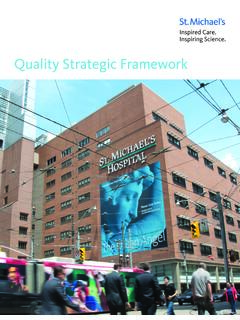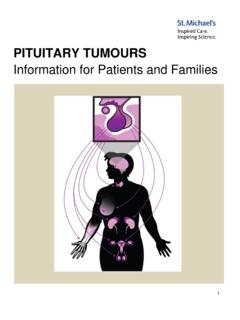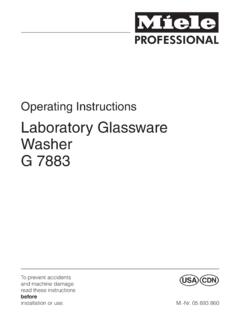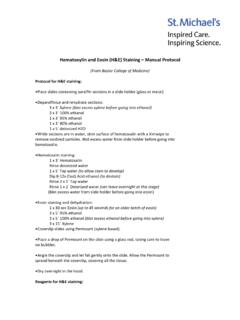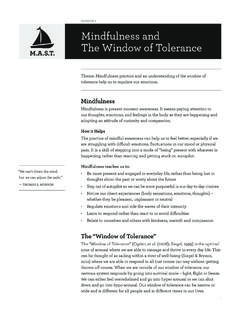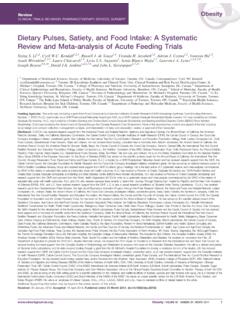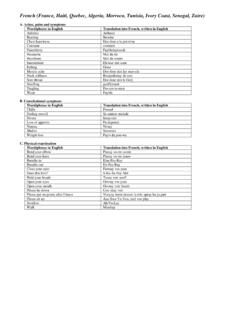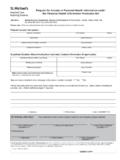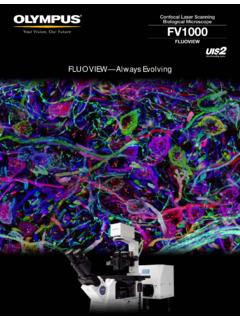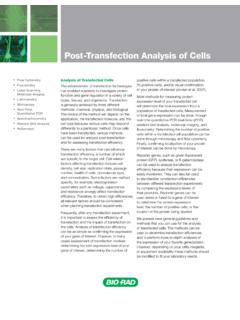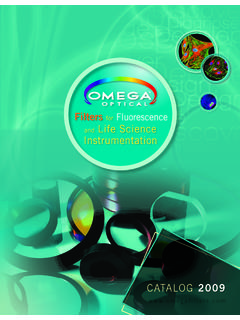Transcription of Mounting Media and Antifade reagents - St. Michael's Hospital
1 Mounting Media and Antifade reagents Compiled* by T. Collins, Wright Cell imaging Facility, Toronto Western Hospital Research Institute In the biomedical sciences, samples are mounted in a wide variety of Media , with a correspondingly wide range of properties, for examination by microscope. Using the incorrect Mounting medium may cause signal loss and optical aberrations; the correct Mounting medium avoids such aberrations and preserves fluorescence signal with anti fading properties. This article introduces Mounting Media for fluorescence microscopy, providing descriptions of their constituents and their properties, as well as accounts of users experience Refractive index mismatch Light is refracted when it crosses the interface between two Media of differing refractive indices (RI) (Fig 1).
2 Mismatching the refractive index of the objective immersion medium and Mounting medium is one of the main causes of image degradation in microscopy. Refractive index mismatch results in stretching/compression of the z axis: a 1 m step size for the objective does not necessarily correspond to a 1 m change in the focal plane. Also, spherical aberration is worsened by axial spreading of the point spread function (PSF) resulting in reduced axial resolution (1). Another consequence of the axial spreading of the PSF is signal loss in a confocal system since fewer photons pass through the pinhole (J. Pawley, 1999, CLA). This phenomenon is exacerbated with depth; with a high numerical aperture objective, serious problems arise when imaging deeper than 10 m into an aqueous sample (2).
3 The Mounting medium and the immersion medium should be matched within (B. Foster, 2003, CLA) ideally to three decimal places (J. Pawley, 1997, CLA). For I5M microscopy, Gustafsson et al. mounted the sample in a mixture of 53% benzyl alcohol, 45% glycerol and 2% N propyl gallate by weight, to have the same refractive index ( ) as the immersion oil (3). It should also be noted that the refractive index of immersion medium will vary with temperature approximately per 1 C (J. Cargille, Cargille Labs); the variance will be even more pronounced with wavelength. CONSTITUENTS There are many commercial Mounting Media available, and even more recipes to make your own.
4 Mounting Media comprise two or three main ingredients: a base, an Antifade reagent, and sometimes a plasticizer to set. _____ * This information is a collation of useful comments from the Confocal listserver archives (CLA) and the Histonet archives (HA) as well as other web resources. The original comments can be found by searching for the author and year in the CLA archive or by selecting the appropriate archive (month and date) and searching for the author in the Histonet archive. More detailed reviews of Antifade reagents have been published by Ono et al. (6) and Longin et al.(9). Papers describing the effect of refractive index (RI) mismatch have been published by Diaspro et al.
5 (1) and Hell et al. (10). In this article immersion medium refers to the medium between the objective and coverslip, the immersion medium for air objectives is air. Base constituents The base component of a Mounting medium is either aqueous (RI ~ ); glycerol (RI~ ); natural oil (RI~ ); or plastic (RI~ ). The base ingredient is the major determinate of the refractive index of the medium (W. Wallace, 2001, CLA). Natural oils and plastic base Mounting Media tend to be hydrophobic, and therefore require dehydration of the sample: this may cause significant shrinkage of tissue (J. Pawley, 2003, CLA). Aqueous and glycerol based Media are hydrophilic and do not require the sample to be dehydrated.
6 Glycerol may be incompatible with specimens containing lipophilic plasma membrane stains like DiI; this may leach (P. Jansma, 1999, CLA; W. Wallace, 2002, CLA). However, it should be noted that others have not had this problem (A. Elberger, 1999, CLA). Antifade constituents The mechanism by which fluorescent dyes are irreversibly destroyed by photobleaching is not fully understood. It is thought to be linked to the transition from the excited singlet state to the excited triplet state (the latter is more reactive). In this triplet state, the dyes may react with molecular oxygen and lose the ability to become fluorescent, photobleached.
7 However, photobleaching has been demonstrated in an argon environment, in the absence of oxygen (4). This may reflect triplet dye dye interactions (5), which may be strongly dependen t on dye concentration and dye saturation state (K. Braeckmans, 2003, CLA). Most Antifade reagents are reactive oxygen species scavengers. However, sometimes the Antifade itself will quench the fluorescence of the dye but prolong its life at this intensity ( , Apr 1999, HA) p Phenylenediamine (PPD) seems to be the most effective Antifade compound (4;6) . However, it can react with cyanine dyes (especially Cy2) and cleave away half of the cyanine molecule (Jackson ImmunoResearch Laboratories, TechFAQ#3).
8 Use of phenylenediamine as an anti fading reagent in Mounting Media may result in weak and diffused fluorescence following storage of the stained slides. There are several reports of ultraviolet induced yellow fluorescence of Hoechst stained nuclei. One possible explanation of this phenomenon is the contamination of the Mounting medium with meta phenylenediamine. This may react in the presence of weak acid to form a yellow fluorescing basophilic stain. Avoid anything that might be a mixture of the paraand meta isomers (M. Wessendorf, 1993, CLA). n Propyl gallate (NPG) is another commonly used Antifade compound. It is difficult to dissolve, requiring prolonged heating over several hours.
9 It is non toxic and can be used with live cells. However, it has been shown to protect against apoptosis (7), so it may interfere with the biological process under study. 1,4 Diazabicyclo octane (DABCO), also known as triethylenediamine, is not as effective as PPD (6) but is less toxic. It could be used in live cell work; however, it would be predicted to have the same anti apoptotic properties of NPG. To Harden or not to Harden? Some Mounting Media harden as they dry. This facilitates handling and storage; however, the process of hardening often results in significant changes in the RI over time. During the hardening process, there can also be shrinkage and tissue damage.
10 However, this shrinkage may be insignificant compared to the shrinkage that results from dehydration during the fixation process (J. Pawley, 2003, CLA) There are Mounting Media which do not harden. These require sealing the coverslip in order to prevent the Mounting medium drying or leaking. Spacers may be needed to prevent the coverslip from crushing the specimen. SEALANTS Nail polish is widely used to seal the edges of coverslips. There are many accounts of nail polish quenching GFP (J. Feijo, 2002, CLA; S. Castel, 2002, CLA) but others have not had a problem (M. Mancini, 2002, CLA; A. Cornea, 2002, CLA). The quenching is possibly linked to the water soluble isopropyl alcohol in some nail polishes (G.)

